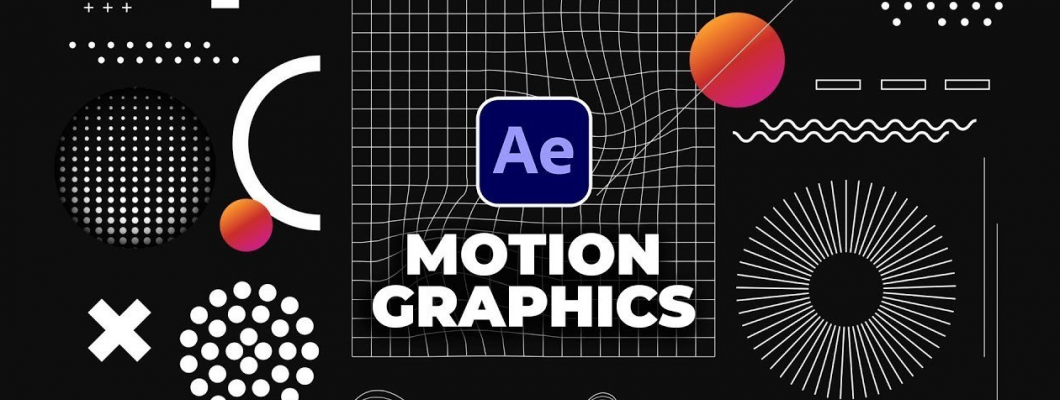
Introduction
In today’s fast-moving digital world, where attention spans are shorter than ever, brands have just a few seconds to make an impression. Traditional static visuals—like logos, banners, and infographics—have played a foundational role in brand identity for years. However, as digital platforms evolve and user expectations shift, static content alone is no longer enough to stand out. Enter motion graphics—animated visual elements that combine design, movement, and often sound to create dynamic storytelling experiences. From animated logos to engaging explainer videos and interactive web animations, motion graphics revolutionize how brands connect with audiences. They don’t just grab attention—they maintain it, helping users better understand and remember your message. Motion graphics also offer flexibility across digital channels. Whether it's a short social media post, an email campaign, or a product walkthrough on a website, animated visuals bring consistency, energy, and emotion to your brand communication. They're visually appealing, memorable, and adaptable to various formats and platforms.
In essence, motion graphics have transitioned from being a design enhancement to a core branding tool. For modern businesses, incorporating movement into brand visuals is not just a trend—it’s a strategic shift toward more immersive, impactful digital storytelling.
What Are Motion Graphics?
Motion graphics are animated graphic elements that transform static visuals into dynamic experiences through movement. Unlike traditional videos that feature live-action footage or characters, motion graphics focus on animated shapes, text, icons, and illustrations. These elements often move in sync with sound effects, narration, or background music to enhance the message. By blending design and animation, motion graphics effectively bridge the gap between visual communication and storytelling. They make complex ideas more digestible and engaging, offering a visually appealing way to capture attention and convey brand messages across digital platforms like websites, social media, presentations, and marketing campaigns.
Why Motion Graphics Are Transforming Branding
1. Instant Engagement
The human brain processes visuals 60,000 times faster than text. Adding motion capture even more attention. A moving logo or animated ad is more likely to stop a scrolling user than a still image.
2. Improved Storytelling
Motion graphics allow brands to tell stories in a concise, engaging, and memorable way. Through smooth transitions, dynamic typography, and visual metaphors, motion graphics explain complex ideas simply and effectively.
3. Consistency Across Channels
With the rise of omnichannel marketing, brands need assets that work seamlessly across platforms—social media, websites, email, and more. Motion graphics provide a dynamic, consistent brand experience regardless of format or screen size.
4. Boosted Conversion Rates
Animated product videos and dynamic calls-to-action are proven to increase conversions. Whether it’s an explainer video on a landing page or a quick product demo on social media, motion graphics lead to better user understanding and higher engagement.
Key Applications of Motion Graphics in Branding
● Animated Logos
Logo animations offer brands a unique signature and can be used in intros, outros, websites, and presentations. These dynamic logos often reflect the brand’s personality while adding a modern and professional touch.
● Social Media Content
Motion graphics are ideal for bite-sized, visually appealing content. Instagram Reels, TikTok clips, and Facebook posts featuring animations get more likes, shares, and comments than static alternatives.
● Explainer Videos
Explaining a product or service through animated visuals makes it easier for viewers to grasp its benefits. Explainer videos are especially useful for tech companies, SaaS platforms, and startups.
● UI/UX Enhancements
Micro-interactions in apps and websites—like animated buttons, transitions, or loaders—improve user experience and reinforce branding without overwhelming users.
● Advertising Campaigns
From YouTube pre-roll ads to animated banners, motion graphics make campaigns more impactful and memorable, driving stronger ROI than static display ads.
The Tools Driving the Motion Graphics Revolution
Several tools have empowered designers and marketers to create compelling motion graphics without the need for advanced animation skills:
Adobe After Effects: Industry standard for creating high-quality motion graphics and visual effects.
Lottie by Airbnb: Allows lightweight, scalable animations in web and mobile apps.
Canva & Crello: Simple drag-and-drop tools for beginners to create animated content for social media and presentations.
Blender & Cinema 4D: Advanced 3D tools for creating dynamic, cinematic branding visuals.
Challenges to Consider
While motion graphics offer numerous benefits, they do come with a few considerations:
File Size & Load Times: Animated content can increase page load time if not optimized properly.
Brand Overload: Too much motion can become distracting or annoying. Subtlety and intention are key.
Consistency in Animation Style: Just as static brand elements follow guidelines, so too should animated elements to maintain a unified look and feel.
Real-World Examples
Google’s use of motion graphics is subtle yet effective—think of the animated dots in its voice search feature or how its logo morphs during loading states. These micro-animations add personality and enhance user interaction.
● Slack
Slack’s onboarding and feature explainer videos use colorful motion graphics to simplify product usage and enhance the brand’s approachable, fun identity.
● Mailchimp
With a quirky and creative brand voice, Mailchimp uses motion graphics across its marketing material to reinforce its tone and visually engage users.
The Future of Motion in Branding
As 5G connectivity, AR/VR, and AI technologies become more accessible, the future of branding is undeniably dynamic. We’re already seeing brands experiment with interactive motion graphics, real-time animation, and AI-generated content.
Motion graphics are no longer optional—they're a strategic tool that sets brands apart. In a sea of content, movement is what makes a brand memorable.
Conclusion
The rise of motion graphics marks a pivotal shift from static branding toward immersive, interactive storytelling. By integrating motion into logos, social content, websites, and product demos, brands can build stronger emotional connections with their audiences. Whether you’re a startup or an established enterprise, embracing motion graphics can elevate your brand and future-proof your digital presence.

Leave a Comment